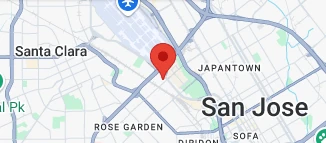Upgrading the Size of a Water Service Line
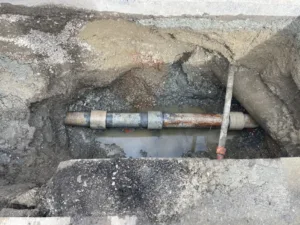
We do a lot of water line leak detection, repairs, and new water line installations. Most of the time for water line upgrades/new installations, we use a process referred to as a “hot tap.” Hot taps essentially are taps into a pressurized water pipe without the need for a water shutoff that can potentially impact an entire neighborhood. Hot taps are a safe and economical way to add new water service lines.
During a project where we were hired to upgrade the water service line from 3/4“ to 1”, we ran into a complication. Once we excavated and exposed the water line main, the area we wanted to tap into had a series of couplings near each other—a building practice that would not be allowed today. They were close enough together that we could not get the required separation from the couplings to our hot tap point. At that point, the City, Foster City to be specific, decided we should not tap that section and it would be best to replace the entire section of pipe, removing the old couplings. Such a decision was not made lightly as it involves numerous City resources, a significant loss of fresh water, traffic impact, and temporary water service interruption for an entire neighborhood.
Foster City was an excellent partner for this project. They coordinated with us to alert impacted residences and businesses and arranged for the City resources to shut down the water supply to the area where we needed to cut the pipe. This shutdown impacted 38 homes and one business.
The solution was to replace the entire section of pipe with a new piece of 6” C900 pipe (about 66” long) and two Hymax 2 couplings. With the new pipe installed, we had a successful hot tap the following day. Below are pictures and short videos from the process.
On the day of construction, Foster City Public Works shut off the water supply to the neighborhood and started to drain the area of water using a nearby fire hydrant.
With most of the water drained from the system, we cut into the water line. We brought a vacuum excavator which is a tailer-sized machine to take out the water.
With the water mostly drained from the system, we sanitized the new pipe section and installed it.
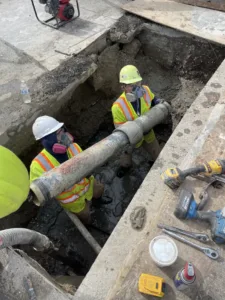
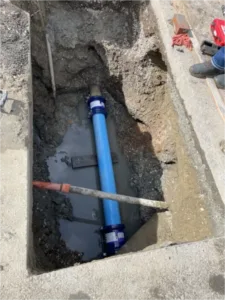
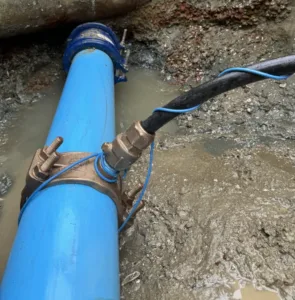
With the new water connection installed and inspection passed, we backfilled with slurry/cement. We filled the trench up, leaving about 6″ for the asphalt layer which was installed the following day. All that was left was to plumb and connect the new water meter.
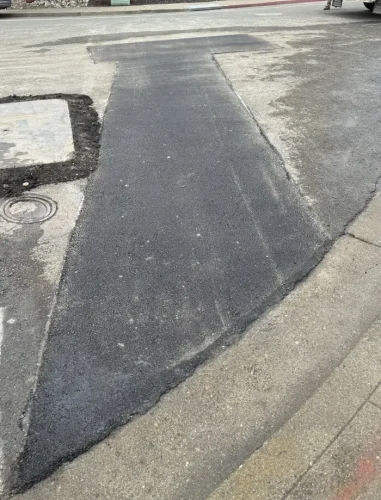

More Helpful Resources to Help Guide Your Decision
Choosing the right contractor is a big decision. These resources will help you understand our process, compare services, and see why homeowners, contractors, and property owners trust Freedom Underground for their underground utility needs.
| Why Choose Freedom Underground | Lifetime Warranty | Customer Reviews |
| FAQ: What You Can Expect from Freedom Underground Plumbing | FAQ: General Engineering Contractor | Pricing for Standard Services |
| Water Leak Detection and Location Tools | Trenchless Technology | City and County Resources for Permits |
| Past Project Examples Browse examples of our completed projects, complete with photos and videos, so you can see the quality of work you can expect when you choose to partner with us. |
Our Customer-Focused Blog Helpful articles and insights for homeowners on plumbing, water, sewer, gas line, and electrical conduit issues. |
Explore Our Services The specific types of services we can help you with. |

